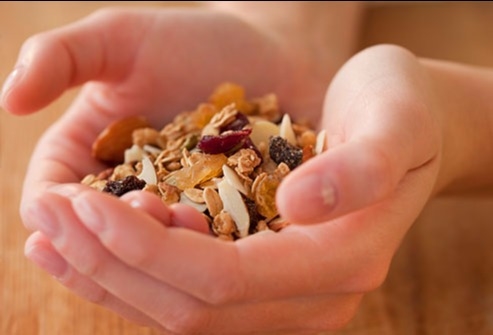
Dry Fruits Kheer for Babies? 5 Ways to Include Dry Fruits in your Baby’s Diet
9 Feb 2016 | 4 min Read
Prisha Lalwani (Mummasaurus)
Author | 71 Articles
Dry Fruits are super foods! With an amazing shelf life and yummy taste, they have tons of nutrients that our kids should not miss out at all!
Here are 5 ways to include them in your baby’s diet:
1. Eat as it is
As your child is able to chew well (some dry fruits are really hard and need strong molars to be chewed), you can introduce them to raisins, figs, apricots, dry peaches and so on and so forth. Introduce harder nuts like almonds, walnuts, pecans, etc when they are 3-4 years or older. They also make an amazing snack and diversion from sweet cravings for kids. It is any day better to hand them a fig instead of a candy.
Source: palpalindia.com
2. Add to preparations by chopping
You can add the soft dry fruits to your child’s kheer or halwa (porridge/pudding) variants. This adds some bit of a texture and color for your kids, not to forget nutrition as well.
Source: archanaskitchen.com
3. Dry Fruit Energy Bars/Balls
Use any dry fruits of your choice like prunes, figs, raisins, peaches, etc and de – seed them.
Use any nuts of your choice like pistachio, walnut, almond, cashew, etc and toast them in some clarified butter or ghee.
Now add both of these sets of dry fruits in the blender and grind them till it becomes a smooth paste. You can optionally add one green cardamom and few seeds of black cardamom (for gastric issues).
Source: farm3.staticflickr.com
Now either make small balls with your hands or spread them on a greased plate or mould, and cut in shapes of choice. Keep it in the refrigerator to set over night. If it does not bind too well, add very little khoya (condensed milk extract) and cook it all together for a few seconds till khoya is incorporated. Then make shapes as per your choice.
These bars or balls can be stored in the fridge for up to 15 days, but it is preferable that you make a really small batch to be consumed asap.
4. Grind it up
Take 1 cup each of Almonds, Pistachio and cashews and dry roast them in a wok on a low flame till they change colour and are thoroughly roasted. Allow this to cool.
Source: shravskitchen.files.wordpress.com
Then add couple of cardamoms, pinch of turmeric powder, 1 tsp dried ginger powder and few saffron strands along with the toasted dry fruits in the grinder and grind it to a somewhat fine – coarse powder. The dry fruit powder can be stored in a container for up to 1 month. If the powder has been ground to a very fine consistency, the dry fruits will secrete their oil and lumps will be formed, spoiling the powder.
This powder can be added to milk (after 2 years of age), porridge, kheer or any of the purees you may prepare for your little one.
5. Health Drink
Overnight soak 2 Almonds, 1 dates, 1 walnuts, 2 cashews, 2 unsalted pistachios, few saffron strands and a pinch of poppy seeds(khus khus/poshta dana) in a glass of milk. In the morning, blend the mixture well together. You may want to remove the skins of some nuts. Then bring the mixture to a boil and consume as per preferred temperature. You may want to add some sugar in it, if your child likes it sweet.
Source: s3.amazonaws.com
With laden nutrients in dry fruits, they should be a must in your baby’s diet, irrespective of the weather! Try them out for your little one and don’t miss to share it with mom peers 🙂
Source for banner image: herintalk.com
A


Suggestions offered by doctors on BabyChakra are of advisory nature i.e., for educational and informational purposes only. Content posted on, created for, or compiled by BabyChakra is not intended or designed to replace your doctor's independent judgment about any symptom, condition, or the appropriateness or risks of a procedure or treatment for a given person.
